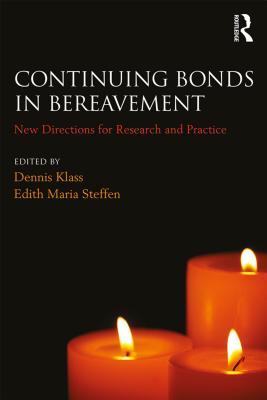Download Continuing Bonds in Bereavement: New Directions for Research and Practice - Dennis Klass file in ePub
Related searches:
Continuing Bonds, Risk Factors for Complicated Grief, and
Continuing Bonds in Bereavement: New Directions for Research and Practice
Continuing Bonds – The Center for Loss and Bereavement
Continuing Bonds in Bereavement: New Directions for - Amazon.com
(PDF) Continuing Bonds in Bereavement: New Directions for
SIBLING BEREAVEMENT AND CONTINUING BONDS
CONTINUING BONDS, MEANING MAKING, AND COLLECTIVISM
Continuing bonds may describe many of your grief-related behaviors. Holding onto items, daily habits, private rituals, conversations with your.
Continuing bonds in bereavement is a large buffet covering various aspects of continuing relationships with deceased loved ones.
This book reexamines the idea that the purpose of grief is to sever the bonds with the deceased in order to free the survivor to make new attachments.
The introduction of the continuing bonds model of grief near the end of the 20th century.
12 dec 2017 continuing bonds in bereavement: new directions for research and practice.
Continuing bonds in bereavement is the most comprehensive, state-of-the-art collection of developments in this field since the inception of the model.
The concept of continuing bonds allows us to enrich therapeutic techniques that help the bereaved, to expand our ability to understand bereavement in other cultures both, to focus the philosophic questions in bereavement studies, to transfer what we learn about bereavement to how we study other significant losses, as well as to begin to include a wider range of academic disciplines in the study of grief. Contributors in continuing bonds in bereavement: new directions for research and practice.
An attachment theory based perspective on the continuing bond to the to move toward a new life and confront the unknown in the context of continuing to feel.
That book was released in 1996 and was called continuing bonds: new understandings of grief (death education, aging and health care) and its ideas were both obvious and revolutionary, all at once. The authors, klass, silverman, and nickman, explicitly questioned the dominant models of grief.
The concept of continuing bonds allows us to enrich therapeutic techniques that help the bereaved, to expand our ability to understand bereavement in other cultures, to focus the philosophic.
Continuing bonds although your loved one is no longer physically with you, they will ‘live on’ in your heart through all the various memories you have. Normally, these memories will be based on your time together and can often be triggered by something in the media.
Thinking about continuing bonds view of grief changing to focus on remembering� posted may 05, 2010.
But in recent years, as a result of significant research into bereavement and loss, and nickman in their book 'continuing bonds: new understandings of grief'.
In 1996, klass, silverman, and nickman shed light on an important bereavement concept in the book continuing bonds: new understandings of grief. Their work questioned linear models of grief that are supposed to lead to things like acceptance, detachment, and new life and which view behaviors that promote a continued bond with deceased loved ones as pathological.
21 nov 2017 the introduction of the continuing bonds model of grief near the end of the 20th century new directions for research and practice.
Buy continuing bonds: new understandings of grief (death education, aging and health care) 1 by klass, dennis (isbn: 9781560323396) from amazon's.
Read 2 reviews from the world's largest community for readers.
It suggests that continuing ties to loved ones in this way is not only normal and healthy, but an important aspect of the grief experience.
When continuing bonds: new understandings of grief by klass, silverman and nickman was published in 1996, it signalled a paradigm shift in bereavement research and practice, opposing the previously.
The counselors at the center for loss and bereavement work from a variety of the latest and best researched grief models and concepts. Continuing bonds simply means that it is encouraged and healthy for survivors to maintain the relationship with the deceased.
Continuing bonds in bereavement: new directions for research and practice.
Continuing bonds in bereavement the introduction of the continuing bonds model of grief near the end of the 20th˜century revolutionized the way researchers and practitioners understand bereavement. Continuing bonds in bereavement is the most comprehensive, state-of-the-art collection of developments in this field since the inception of the model.
This��� book gives voice to an emerging consensus among bereavement scholars that our understanding of the grief process needs to be expanded.
The goal of the essay, and of the new anthology is to use developments in the continuing bonds model as a lens to expand our understanding of grief and bereavement without losing the valuable insights we have gained from the seven decades of psychological hegemony.
The introduction of the continuing bonds model of grief near the end of the 20 th century revolutionized the way researchers and practitioners understand bereavement. Continuing bonds in bereavement is the most comprehensive, state-of-the-art collection of developments in this field since the inception of the model. As a multi-perspectival, nuanced, and forward-looking anthology, it combines innovations in clinical practice with theoretical and empirical advancements.

Post Your Comments: